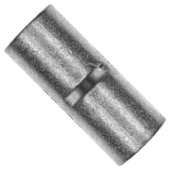Yes, I put BOTH 7-AWG into a 4-AWG Butt Connector that has 13mm (1/2") on BOTH Sides for crimping.
LINK HERE: (See the Spec Sheet for proper detail)
Order today, ships today. 34323 – Terminal Butt Splice, Inline, Individual Openings Connector Crimp 4 AWG from TE Connectivity AMP Connectors. Pricing and Availability on millions of electronic components from Digi-Key Electronics.

www.digikey.ca
Sorry I only have a ph
View attachment 96546oto with it Shrink Wrapped already.
I now have 3 running and there is absolutely no issues whatsoever.
In Fact, after a few "Trials & Tribulations" with the JK Software (What a PITA) and doing the 9V Kick Start I am quite pleased with the results.
Using the enjpower-bms-3.7.4.88 software which WORKS
tHE 极空BMS_4.6.5.apk PROVIDED ONLINE fails to Install. Apparently not quite compatible.
Thank Goodness for
@upnorthandpersonal and his diligent help !
Awesome Stuff....
Also an interesting BTW/FYI...
I did the two EV-Cell Packs (the 175's) which were always "cranky" and now they charge, nicely and keep to a tight cell delta from 3.425 down.
I setup Balancing to start @ 3.37V as I am only charging the batteries "Bulk/Absorb" to 3.4375Vpc and Floating at 3.425Vpc so I am never hard pushing above the working range.
Hope it Helps, Good Luck




